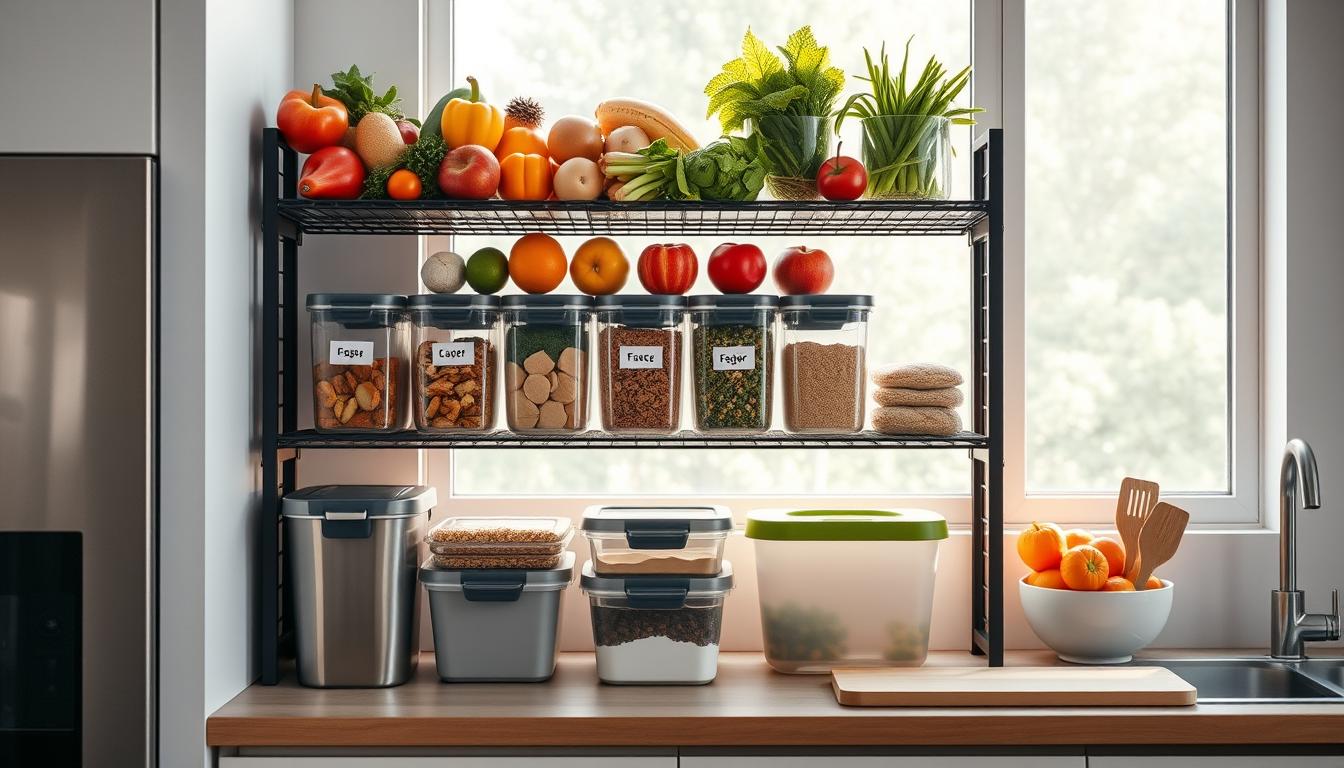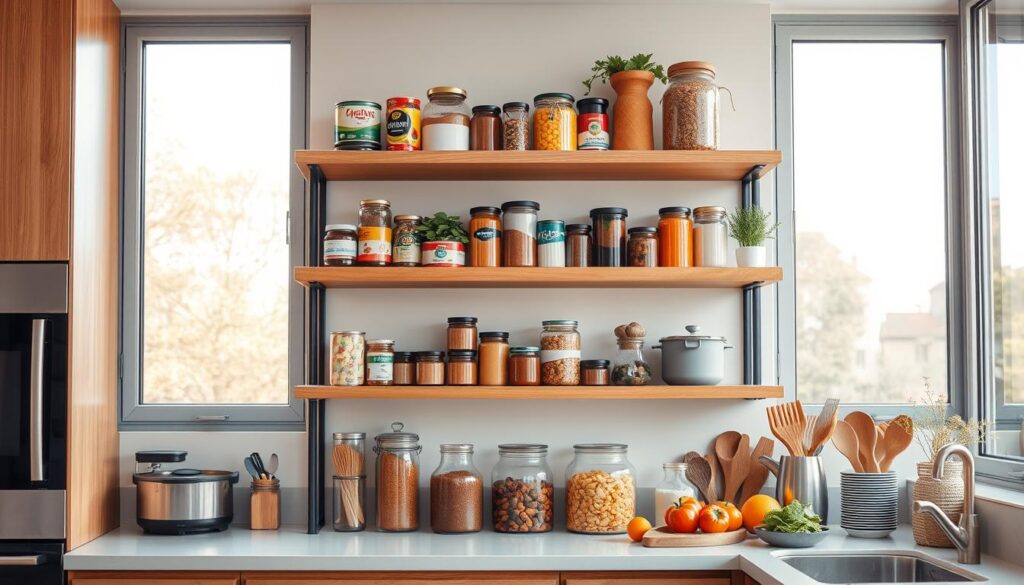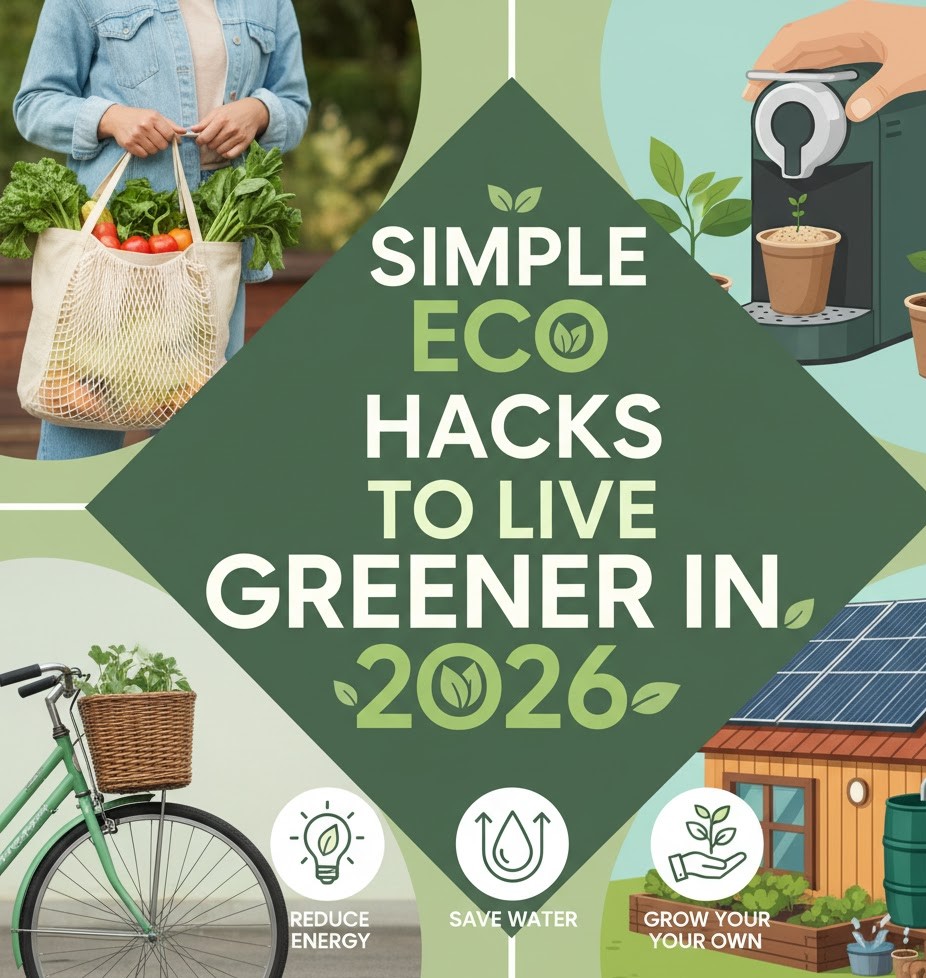Blog
The 3-Tier Kitchen Hack That Stops Food Waste and Saves You Money

Food waste is a significant issue for households, resulting in substantial financial losses. According to recent studies, learning how to reduce food waste at home is one of the most effective strategies for slashing grocery budgets. Most food waste occurs in the fridge, where items are often lost or forgotten.
The 3-tier kitchen hack is a simple yet effective solution to this problem. By implementing this hack, households can significantly reduce food waste and save money. This innovative approach focuses on optimizing storage and visibility in the fridge, making it easier to keep track of food items.
Key Takeaways
- Reducing food waste can significantly lower grocery bills.
- The 3-tier kitchen hack is a simple and effective solution.
- Optimizing fridge storage can minimize food waste.
- Households can save money by implementing this hack.
- Food waste is a significant issue in many households.
Understanding Food Waste and Its Financial Impact
Food waste is a critical issue affecting American households, with far-reaching consequences for both family budgets and the environment. Effective kitchen organization can play a crucial role in mitigating this problem.
The Scale of the Problem in American Households
According to recent data, 30-40% of the food supply in the United States ends up in the waste bin, amounting to 325 pounds per person per year, as of 2023.
Financial Losses Due to Wasted Food
The average family loses a significant amount of money due to food waste. Redirecting this wasted expenditure could benefit household finances.
Environmental Consequences
Food waste contributes to greenhouse gas emissions and wastes resources used in food production, transportation, and storage. Implementing better kitchen organization systems can help reduce these issues.
What Is the 3-Tier Kitchen Organization System?
The 3-Tier Kitchen Organization System is a revolutionary approach to kitchen storage that helps reduce food waste and save money. This system is designed to optimize kitchen space by categorizing storage into three distinct tiers, each serving a specific purpose.
The Philosophy Behind the Three Tiers
The philosophy behind the 3-Tier system is rooted in the principle of visibility and accessibility. By dividing kitchen storage into three tiers, homeowners can ensure that the most frequently used items are easily accessible, while less frequently used items are stored away but still remain organized.
As Anne-Marie Bonneau, a zero-waste expert, once said, “We don’t need a lot of stuff. We need to be able to see what we have.” This quote encapsulates the essence of the 3-Tier system, emphasizing the importance of visibility in kitchen organization.
How It Differs from Traditional Kitchen Storage Methods
Unlike traditional kitchen storage methods, which often result in cluttered and disorganized spaces, the 3-Tier system provides a structured approach to kitchen organization. By categorizing items into three tiers, homeowners can avoid the common pitfalls of kitchen clutter and ensure that their kitchen remains functional and efficient.
Overview of the Implementation Process
Implementing the 3-Tier Kitchen Organization System involves a straightforward process. First, homeowners need to assess their kitchen space and categorize their kitchen items into three tiers based on frequency of use. Next, they need to assign a designated storage space for each tier, ensuring that the most accessible areas are reserved for the most frequently used items.
By following these steps, homeowners can enjoy a more organized, efficient, and cost-effective kitchen.
The First Tier: Visibility Zone
The Visibility Zone, the first tier of the 3-tier kitchen organization system, is crucial for meal planning and food waste reduction. This zone is designed to keep your most frequently used ingredients visible and easily accessible, encouraging meal planning and reducing the likelihood of expired or spoiled food.
Setting Up Your Visibility Zone
To set up an effective Visibility Zone, start by identifying the most visible areas in your kitchen, such as the front shelves of your pantry and refrigerator. Clear storage tubs and containers are ideal for storing items like fruits, vegetables, and snacks, making it easy to see what’s inside. For more information on designing smart kitchens using zones, visit Laury’s Kitchen blog.

Foods That Should Always Be Visible
Foods that are nearing expiration or are used frequently should be stored in the Visibility Zone. This includes fresh produce, dairy products, and leftovers. By keeping these items visible, you’re more likely to use them before they expire.
Clear Containers and Their Benefits
Using clear containers for storage has several benefits. They allow you to see the contents without having to open them, reducing the time spent searching for ingredients. Additionally, clear containers help maintain the freshness of the stored food by protecting it from light and air.
Refrigerator Door and Front Shelf Organization
The refrigerator door and front shelves are prime real estate for your Visibility Zone. Store frequently used items like condiments, beverages, and ready-to-eat meals in these areas. Organizing these spaces effectively can streamline your meal prep process and reduce food waste.
By implementing a Visibility Zone, you’ll not only reduce food waste but also make meal planning more efficient. This first tier of the 3-tier kitchen organization system sets the foundation for a more organized and cost-effective kitchen.
The Second Tier: Regular Access Zone
By optimizing your regular access zone, you can significantly reduce food waste and make cooking more efficient. This tier is crucial for daily meal preparation, as it stores the ingredients you use most frequently.
Organizing Your Regular Access Zone
To maximize the effectiveness of your regular access zone, consider the layout and accessibility of the items stored here. Easy-to-reach shelves and clear storage containers can make a significant difference in your daily meal prep routine.
Ideal Foods for the Middle Tier
The regular access zone is perfect for storing ingredients that are used regularly, such as cooking oils, spices, and grains. These items should be easily accessible to facilitate meal preparation.
Storage Solutions and Rotation Systems
Effective storage and rotation systems are vital in the regular access zone to prevent food waste. Implementing a FIFO (First In, First Out) method ensures that older items are consumed before they expire.
The FIFO (First In, First Out) Method
The FIFO method involves placing new items behind existing ones, ensuring that older stock is used first. This simple yet effective technique can significantly reduce food waste.
Weekly Inventory Checks
Conducting weekly inventory checks helps you stay on top of what’s in your regular access zone, allowing you to plan meals around ingredients that need to be used soon.
“The key to reducing food waste is being aware of what you have and planning accordingly.”
To illustrate the effectiveness of the FIFO method and weekly inventory checks, consider the following comparison:
| Storage Method | Food Waste Reduction | Ease of Implementation |
|---|---|---|
| FIFO Method | High | Easy |
| Random Storage | Low | Easy |
| Weekly Inventory Checks | High | Moderate |
By implementing these strategies in your regular access zone, you’ll not only reduce food waste but also streamline your meal prep process, making cooking more efficient and enjoyable.
The Third Tier: Long-Term Storage Zone
Effective long-term storage is crucial for reducing food waste and saving money. The third tier of our kitchen organization system is designed to help you make the most of your storage space.
Creating an Effective Long-Term Storage Area
To create an effective long-term storage area, start by designating a specific section of your pantry or kitchen for less frequently used items. This could be a high shelf, a deep pantry, or even a separate storage room if available. Ensure that the area is cool, dry, and away from direct sunlight to prolong the shelf life of your stored food.
Foods That Belong in This Zone
Foods that are less likely to be consumed in the short term are ideal for the long-term storage zone. These include:
- Canned goods
- Dried legumes and grains
- Bulk purchases of non-perishable items
- Special occasion ingredients
Preservation Methods and Tools
To maximize the shelf life of your stored food, it’s essential to use proper preservation methods and tools.
Vacuum Sealing and Freezer Storage
Vacuum sealing is an effective way to prevent freezer burn and keep food fresh for longer. Invest in a good quality vacuum sealer and freezer-safe containers.
Dry Goods Organization and Shelf Life Extension
For dry goods, use airtight containers to keep them fresh. Labeling and date tracking are also crucial for ensuring that older items are used before they expire.
| Food Item | Storage Method | Shelf Life |
|---|---|---|
| Canned Goods | Cool, dry place | Up to 2 years |
| Dried Legumes | Airtight containers | Up to 1 year |
| Bulk Grains | Airtight containers | Up to 6 months |
By implementing these strategies, you can significantly reduce food waste and save money. The key is to stay organized and keep track of what you have in storage.
Implementing the 3-Tier Kitchen Organization in Different Spaces
Whether you’re working with a compact kitchen or a spacious one, the 3-tier system can be customized to fit your needs. The key is understanding how to optimize your kitchen’s unique layout to maximize storage and efficiency.
Small Kitchens and Apartments
In small kitchens, it’s essential to make the most of every available space. Consider using vertical storage solutions to keep your countertops clear. For example, installing wall-mounted shelves or a pegboard can significantly increase your storage capacity. For more ideas on optimizing small kitchens, check out this guide on small kitchen ideas.
Large Family Kitchens
Large kitchens offer more flexibility in terms of storage and layout. Here, you can implement the 3-tier system by dedicating specific areas for different types of food storage. For instance, you might use a large pantry for long-term storage and keep frequently used items in easy-to-access locations.
Pantry-Less Kitchens
In kitchens without a pantry, creative storage solutions are crucial. Two effective strategies include:
- Utilizing vertical storage to maximize wall space
- Repurposing non-kitchen areas for food storage
Vertical Storage Solutions
Vertical storage can be achieved through the use of tall shelving units or stackable containers. This not only helps in keeping your kitchen organized but also makes it easier to find what you need.

Consider repurposing areas like a closet or a section of a garage for food storage. This can be particularly useful for storing bulk items or less frequently used kitchen gadgets.
| Kitchen Type | Storage Solution | Benefits |
|---|---|---|
| Small Kitchen | Vertical Storage | Increased storage, clear countertops |
| Large Kitchen | Dedicated storage areas | Flexibility, organized storage |
| Pantry-Less Kitchen | Repurposed storage areas | Additional storage, creative use of space |
Essential Tools for Successful 3-Tier Kitchen Organization
To make the most out of the 3-tier kitchen hack, you’ll need to equip your kitchen with essential organizational tools. The right equipment not only enhances the functionality of your kitchen but also ensures that the 3-tier system operates smoothly.
Storage Containers and Labeling Systems
Storage containers are crucial for maintaining the integrity of the 3-tier system. Clear Storage Tubs and Twist Airtight Canisters are highly recommended for storing food items, keeping them fresh, and making them easily visible. A robust labeling system is also vital; it helps in identifying contents without having to open containers, thus streamlining meal prep and reducing food waste.
Shelf Organizers and Dividers
Shelf organizers and dividers play a significant role in maximizing storage space and improving accessibility. They help in categorizing items, preventing clutter, and ensuring that older items are consumed before they expire. By creating separate sections for different types of food, you can maintain a tidy and efficient kitchen.
Food Preservation Tools That Pay for Themselves
Investing in food preservation tools such as vacuum sealers can significantly extend the shelf life of your food, reducing waste and saving money. According to experts, “pest-free storage” is crucial for maintaining food quality.
Cost-Benefit Analysis of Organization Products
While there’s an initial investment in purchasing storage containers, labeling systems, and preservation tools, the long-term benefits far outweigh the costs. By reducing food waste and improving meal planning efficiency, these tools can lead to significant savings over time. A careful cost-benefit analysis will reveal that these investments are not just practical but also economically viable.
As
“The key to successful kitchen organization is not just about having the right tools, but also about maintaining the system over time.”
By choosing the right tools and maintaining your 3-tier kitchen organization system, you’ll be able to enjoy a more streamlined cooking process and reduced food waste.
Meal Planning and Shopping with the 3-Tier System
The 3-tier kitchen system isn’t just about storage; it’s also about planning your meals and making smart shopping decisions. By integrating meal planning and shopping into your kitchen organization, you can further reduce food waste and save money.
Creating Visibility-Focused Meal Plans
To get the most out of your 3-tier kitchen organization, start by creating meal plans based on the ingredients you have visible in your Visibility Zone. This approach ensures that you’re using items before they expire or go to waste. Begin by taking stock of what’s in your fridge, pantry, and regular access zone. Then, plan your meals around these ingredients.
Tips for visibility-focused meal planning:
- Check your Visibility Zone regularly for near-expired items
- Plan meals around seasonal produce to ensure freshness
- Use a meal planning app to organize your recipes and shopping lists
Shopping Strategies That Support the System
Once you have a meal plan, it’s time to shop. Effective shopping strategies are crucial to maintaining your 3-tier kitchen organization. Focus on buying only what you need, and consider the storage capacity of each tier.
Smart shopping tips:
- Make a shopping list based on your meal plan and stick to it
- Buy in bulk for non-perishable items that fit in your Long-Term Storage Zone
- Avoid impulse buys, especially for perishable items
Calculating Your Savings Over Time
To understand the financial impact of your 3-tier kitchen system, it’s essential to track your savings. This involves monitoring your food waste reduction and the associated cost savings.
Weekly Savings Tracking Methods
Implement a weekly review of your food usage and waste. Compare this to your shopping list and meal plans to identify patterns and areas for improvement.
Monthly Budget Adjustments
Based on your weekly tracking, make monthly adjustments to your grocery budget. As you reduce food waste, you can allocate the saved funds to other areas of your household budget.
By following these strategies and continually assessing your meal planning and shopping habits, you can maximize the benefits of your 3-tier kitchen organization system.
Troubleshooting Common Challenges in the 3-Tier System
Successfully implementing the 3-tier kitchen organization system requires overcoming a few common obstacles. While the system is designed to reduce food waste and save money, users may encounter challenges that can hinder its effectiveness.
When Family Members Don’t Cooperate
One of the primary challenges is getting all family members to cooperate with the new system. To address this, it’s essential to communicate the benefits of the 3-tier system clearly and involve everyone in the implementation process. Assigning specific roles and responsibilities can also help ensure that everyone is on board.
Dealing with Unexpected Food Surpluses
Unexpected food surpluses can be another issue. To manage this, consider flexible meal planning strategies that can accommodate extra ingredients. You can also use the surplus food to create new meals or preserve it for later use.
Adjusting the System for Special Dietary Needs
For households with special dietary needs, adjusting the 3-tier system is crucial. This may involve separating allergens and ensuring that the storage solutions meet specific dietary requirements.
Allergen Separation Strategies
To effectively separate allergens, use separate storage containers and label them clearly. This will help prevent cross-contamination and ensure that the kitchen remains safe for all users.
Conclusion: Transforming Your Relationship with Food and Your Budget
Implementing the 3-tier kitchen organization system is a game-changer for households looking to reduce food waste and save money. By creating a Visibility Zone, Regular Access Zone, and Long-Term Storage Zone, you can maintain a clutter-free kitchen that supports efficient meal prep.
The third source concludes that “visibility is everything” in reducing food waste, and this system puts that principle into practice. By keeping frequently used items visible and easily accessible, you’ll be more likely to use them before they expire.
Effective kitchen organization is not just about storage; it’s about creating a system that works for you and your family. By combining the 3-tier system with thoughtful meal planning and shopping strategies, you can significantly reduce food waste and lower your grocery bills.
As you maintain your newly organized kitchen, you’ll find that meal prep becomes more streamlined, and you’re more mindful of the food you’re purchasing and consuming. This transformation can have a lasting impact on your budget and your relationship with food.



